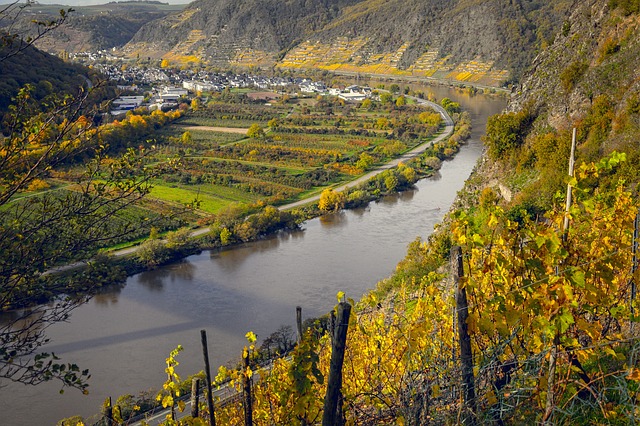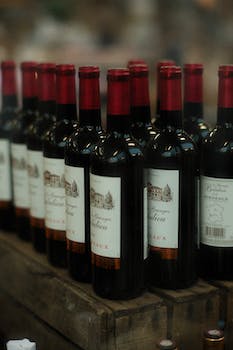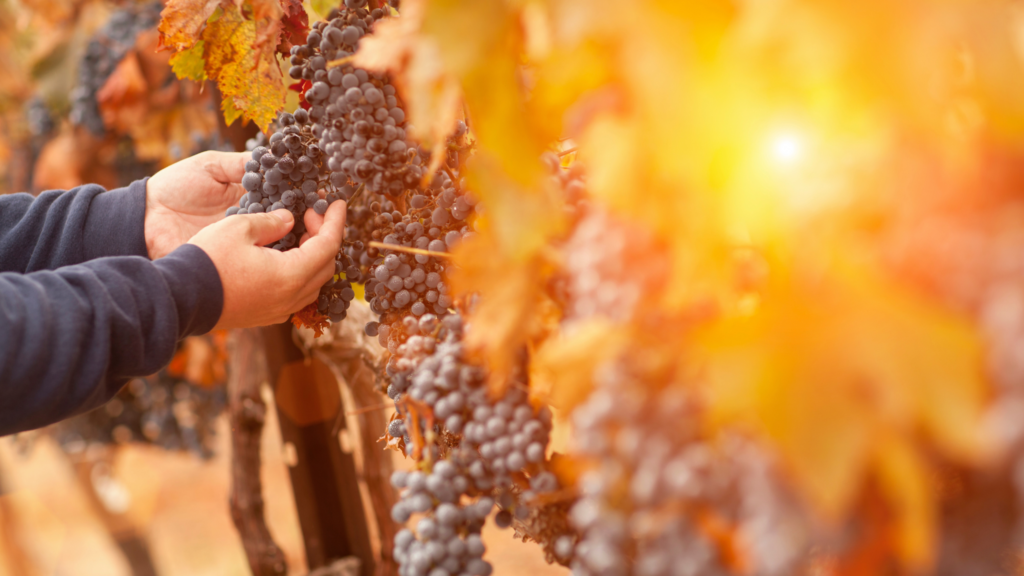-
Table of Contents
of Long Island’s Winemaking Legacy!
Long Island’s winemaking legacy is a proud one, with a history that dates back to the 1970s. For the past 50 years, Long Island’s winemakers have been crafting some of the finest wines in the world. From the North Fork to the South Fork, Long Island’s winemakers have been producing award-winning wines that have earned them international recognition. From the first vineyards planted in 1973 to the more than 50 wineries that now call Long Island home, the region has become a premier destination for wine lovers. To celebrate this milestone, Long Island’s winemakers are hosting a series of events throughout the year to honor their legacy and to share their passion for winemaking with the world. From special tastings and dinners to educational seminars and tours, Long Island’s winemakers are inviting everyone to join them in celebrating 50 years of winemaking excellence.
Exploring Long Island’s Winemaking History: A Look at the Last 50 Years

Long Island has a rich winemaking history that dates back to the early 1800s. In the last 50 years, the region has seen a resurgence in winemaking, with dozens of wineries popping up across the island. From the North Fork to the South Fork, Long Island’s winemaking industry has grown exponentially in the last half-century.
In the 1970s, the first modern winery on Long Island was established in Cutchogue. Hargrave Vineyard was founded by Alex and Louisa Hargrave, who planted their first vines in 1973. The winery quickly gained a reputation for producing high-quality wines, and it remains one of the most popular wineries on the island today.
In the 1980s, more wineries began to open up across Long Island. The region’s winemaking industry was bolstered by the establishment of the Long Island Wine Council in 1983. The council was created to promote the region’s wines and to help wineries market their products.
The 1990s saw a boom in Long Island’s winemaking industry. Dozens of new wineries opened up, and the region’s wines began to gain recognition on the national and international stage. In 1995, the Long Island Merlot Alliance was formed to promote the region’s signature grape variety.
The 2000s saw the continued growth of Long Island’s winemaking industry. The region’s wines began to receive more awards and accolades, and the number of wineries on the island continued to grow. In 2008, the Long Island Wine Country Tourism Council was established to promote the region’s wineries and to attract more visitors to the area.
Today, Long Island is home to more than 50 wineries, and the region’s wines are enjoyed around the world. The island’s winemaking industry has come a long way in the last 50 years, and it shows no signs of slowing down. So, if you’re looking for a unique wine-tasting experience, be sure to check out Long Island’s wineries!
Celebrating Long Island’s Winemaking Legacy: A Tribute to the Pioneers
Long Island has a rich winemaking history that dates back to the early 1800s. From the first vineyards planted by the French Huguenots to the modern-day wineries that have become a major part of the region’s economy, Long Island’s winemaking legacy is something to be celebrated.
The first vineyards on Long Island were planted by the French Huguenots in the early 1800s. These early settlers brought with them their knowledge of winemaking and viticulture, and soon the region was producing some of the finest wines in the country.
In the late 1800s, the Long Island wine industry began to take off. Wineries such as Hargrave, Peconic Bay, and Lenz were established, and the region’s wines began to gain recognition. By the early 1900s, Long Island wines were winning awards at international competitions and were being served in some of the finest restaurants in the world.
Today, Long Island is home to more than 50 wineries, producing a wide variety of wines from classic European varietals to unique hybrids. The region’s winemakers are dedicated to producing high-quality wines that reflect the unique terroir of Long Island.
Long Island’s winemaking legacy is something to be celebrated. The region’s winemakers are carrying on the traditions of the past while also pushing the boundaries of winemaking and creating new and exciting wines. So, the next time you’re enjoying a glass of Long Island wine, take a moment to remember the pioneers who made it all possible.
The Impact of Long Island’s Winemaking Legacy on the Region’s Economy
Long Island’s winemaking legacy has had a significant impact on the region’s economy. The industry has been a major source of employment and revenue for the area for decades.
The winemaking industry on Long Island dates back to the early 1800s, when the first vineyards were planted. Since then, the industry has grown steadily, with more than 50 wineries now operating in the region. These wineries produce a variety of wines, from dry whites to sweet dessert wines.
The winemaking industry has had a positive economic impact on Long Island. It has created jobs for local residents, from vineyard workers to winemakers and tasting room staff. It has also generated revenue for the region, with wineries bringing in millions of dollars in sales each year.
The winemaking industry has also had a positive impact on tourism in the region. Long Island’s wineries are popular destinations for wine lovers, who come to sample the region’s wines and learn about its winemaking history. This has helped to boost the local economy, as visitors spend money on lodging, dining, and other activities.
Long Island’s winemaking legacy has had a lasting impact on the region’s economy. It has created jobs and generated revenue for the area, while also helping to boost tourism. As the industry continues to grow, it will continue to have a positive impact on the region’s economy.
How Long Island’s Winemaking Legacy Has Evolved Over the Last 50 Years
Long Island has a long and proud winemaking history that dates back to the early 1800s. Over the last 50 years, the winemaking industry on Long Island has evolved significantly.
In the 1970s, the first modern wineries began to appear on Long Island. These wineries focused on producing high-quality wines that could compete with the best wines from Europe. This was a major shift from the traditional winemaking practices of the past, which had focused on producing bulk wines for local consumption.
In the 1980s, the Long Island wine industry began to expand rapidly. Wineries began to experiment with different grape varieties and winemaking techniques, and the quality of the wines produced on Long Island began to improve significantly. This period also saw the emergence of the first Long Island wine trails, which allowed visitors to explore the region’s wineries and sample their wines.
In the 1990s, the Long Island wine industry continued to grow and evolve. Wineries began to focus on producing premium wines that could compete with the best wines from around the world. This period also saw the emergence of the first Long Island wine festivals, which allowed visitors to sample the region’s wines and learn more about the winemaking process.
Today, the Long Island wine industry is thriving. Wineries are producing a wide range of high-quality wines, from dry whites to sweet dessert wines. The region is also home to a number of wine trails and festivals, which allow visitors to explore the region’s wineries and sample their wines.
Long Island’s winemaking legacy has evolved significantly over the last 50 years. From producing bulk wines for local consumption to producing premium wines that can compete with the best wines from around the world, the region has come a long way. Today, Long Island is home to a thriving wine industry that produces some of the best wines in the world.
Q&A
Q1: How long has Long Island been producing wine?
A1: Long Island has been producing wine for over 50 years. The first commercial winery was established in 1973.
Q2: What types of grapes are grown in Long Island’s vineyards?
A2: Long Island’s vineyards grow a variety of grapes, including Chardonnay, Sauvignon Blanc, Merlot, Cabernet Franc, Cabernet Sauvignon, and Riesling.
Q3: What is the Long Island Wine Council?
A3: The Long Island Wine Council is a non-profit organization that promotes the region’s wine industry. It was founded in 1983 and is made up of wineries, vineyards, and other industry professionals.
Q4: What is the Long Island Wine Festival?
A4: The Long Island Wine Festival is an annual event that celebrates the region’s winemaking legacy. It features tastings, seminars, and live music. The festival is held each summer in Riverhead, New York.Long Island’s winemaking legacy is a testament to the hard work and dedication of the many winemakers who have been part of the region’s history. From the first vineyards planted in the 1970s to the more than 50 wineries that now call Long Island home, the region has become a leader in the production of quality wines. The region’s winemaking legacy is a source of pride for the local community and a reminder of the importance of preserving the region’s agricultural heritage. As Long Island celebrates its 50th anniversary of winemaking, it is a time to reflect on the past and look forward to the future of this vibrant industry.
![]()











